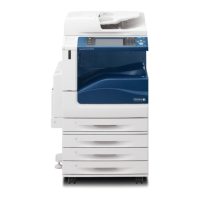Configuration for Authentication
349
Authentication and Account Administration
13
Configuration for Authentication
This section explains how to configure the machine to use the authentication feature.
The following shows the reference section for each item.
Step 1 Enabling Authentication................................................................................................ 349
Step 2 Changing the Default Authorization Group Settings .................................................... 351
Step 3 Creating an Authorization Group.................................................................................. 351
Installation Overview
Set either one of the following authentication modes to authenticate.
Local machine authentication
Specify the authentication mode, access control, and register user.
Remote authentication
Specify the authentication mode, access control, and remote authentication server.
Change the default authorization group settings and add an authorization group, as
necessary.
Step 1 Enabling Authentication
This step explains the procedures when [Login to Local Accounts] is selected and when
[Login to Remote Accounts] is selected respectively.
When [Login to Local Accounts] is Selected
Use the following procedure to enable local authentication.
1
Press the <Log In/Out> button.
2
Using the numeric keypad or the keyboard displayed, enter the system administrator’s
user ID to enter the System Administration mode, and select [Enter].
When a passcode is required, select [Next] and enter the system administrator’s
passcode, then select [Enter].
Note • The default user ID is "11111".
• The default passcode is "x-admin".
3
Select [Tools].
4
Select [Authentication/Security Settings].
5
Select [Authentication].
6
Select [Login Type].
7
Select [Login to Local Accounts], then select [Save].
Refer to "Login Type" (P.237).
8
Select [Access Control].
9
Select [Service Access].

